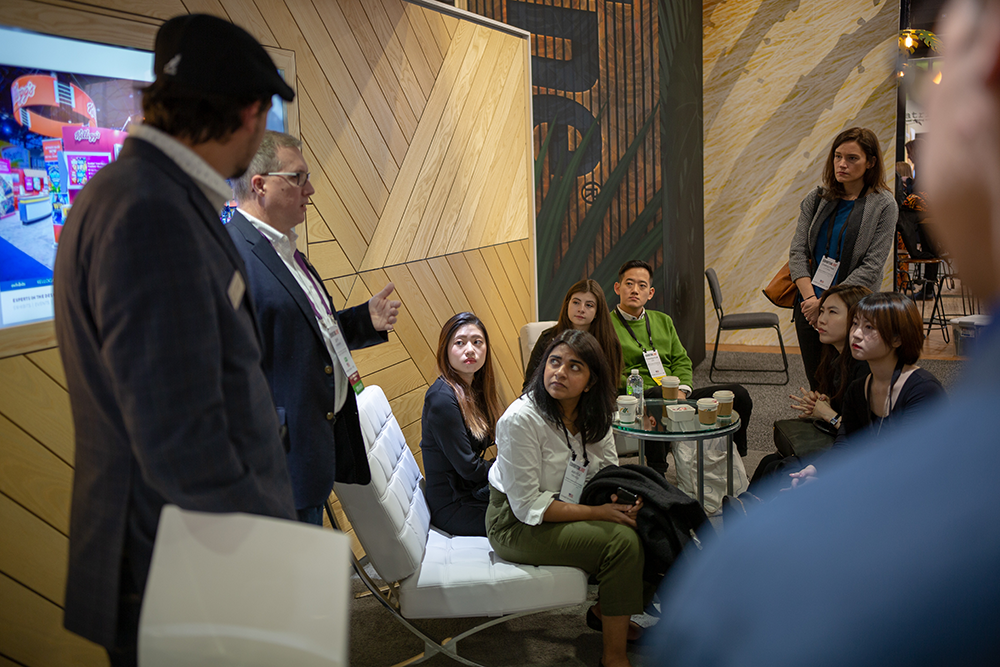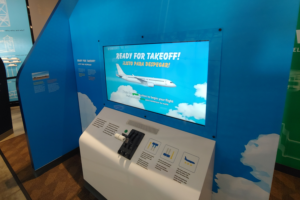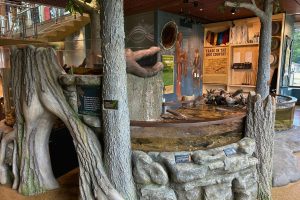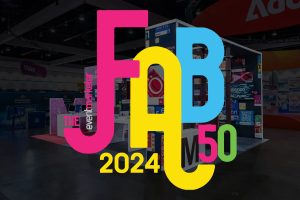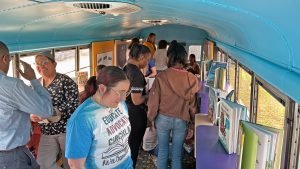The last thing we want to do is sit in a meeting with no purpose.
Everyone has experienced this. You sit down, make small talk, and the meeting begins. There’s no agenda, no takeaway, and everyone leaves flustered and ill-prepared to take on the next steps.
Not setting an agenda, goals, and objectives with your booth staff is a sure-fire way to destroy morale. This is not just an investment for your company, it’s an investment for those attending, too. They’re taking time away from their families, friends, and responsibilities to travel and work your exhibit. This is why hosting a pre-show meeting is critical – you establish the “why,” set goals for your staff, and prepare them to be successful and energized.
In part one of our pre-meeting series, we’ll discuss tactics and best practices for in-person pre-show meetings. Before you hit your staff’s calendar, here are tactics and factors to consider that will equip your team with the knowledge and tools they need to execute on the show floor.
ESTABLISHING YOUR “WHY” AND SETTING GOALS
Why are you exhibiting?
Seems like a silly question to ask, but this is the fundamental reason why you’d host a pre-show meeting at all. If your staff doesn’t understand the why, they won’t know what to do and will likely go rogue. Providing your team with the exhibit’s “why” will give them their “why.”
Months ago, you made the decision to exhibit at this conference or host this event. The fundamental reason you are making the investment in this event is your “why”. Once you’ve solidified the “why,” you need to establish the goals and objectives that pair with it. At least six months before a trade show or major events, this planning should take place. All involved parties should be included in this process to solidify all that needs to be accomplished on the show floor. Once the goals, objectives, and overarching messaging of the trade show is prepared, it’s time to begin planning your pre-show meeting.
THERE’S A TIME AND A PLACE FOR THAT
The common reasons that pre-show meetings fail is because of lack of preparation or inconvenient location or timing.
Optimizing your meeting space and time is conducive to your staff’s success. If budget or time allows, selecting a meeting space that will inspire learning will help things stick in your staff’s minds. This could be a hotel conference room, a conference room in your office, a space rented offsite, or if it’s nice, outside.

“You want to take as much care in choosing your environment as you would identifying participants. Choosing a space that is light, airy, and colorful will help ideas and conversation flow freely,” said Ellen Kaminski, Vice President of Sales and Marketing at Exhibit Concepts.
Depending on the space, Kaminski also recommends including upbeat music and changing the seating. This could be arranging chairs in a circle or even asking participants to stand. By providing stimuli and setting the scene, you’ll better engage your team.
Space isn’t the only consideration. Setting your time and creating an agenda to follow will help you organize the meeting’s content to ensure you’re touching on each critical piece of information your team needs.
When setting the time, consider how far out you are from the event, the complexity of your training, and who needs to be included. Ideally, you’ll want to deliver materials and training in 45 minutes. However, if your team needs trained on lead generation systems, products, or presentations, this might exceed 45 minutes. If your meeting will exceed two hours, be sure to provide your team with ten minute breaks so they can refresh and reset.
Hosting your meeting a week before the event is optimal, as to keep the information fresh. If you host the meeting too far in advance or too close to the show, you risk your staff not retaining what they learned from your training, which will result in SNAFUs on the show floor.
KEEP THEM ENGAGED
Standing in front of an audience while reading PowerPoint slides isn’t going to cut it. If you want your staff to retain all the information they need for the show, it’s going to take creativity and some enthusiasm to get them pumped up to perform.
Before the meeting, make sure you send an agenda or other pre-show handouts so that beforehand, your team has the “why,” goals, and objectives served on a silver platter. This will help them feel better prepared and gives them something to reference at the meeting or in the booth if they get stuck.
Just because you’re holding a meeting doesn’t mean it has to be dry and boring, either. A great way to engage your staff is through video content that delivers your training materials. This can be done in a fun, lighthearted way rather than just a talking head.
Games are another fun, educational, and persuasive tactic to get your staff engaged. Especially, if there’s an element of competition and reward for the winner. This could be exhibiting bingo, a listening quiz, or role playing game. If someone wins, you could award them food such as candy or gift cards to entice the group to play.
PRACTICE MAKES PERFECT
Once you’re at the show, it’s critical that you do a run through with your booth staff before the show opens. When the booth is set up and finalized, take time with your staff to reiterate important information, walk through the booth to get a feel for the traffic flow, practice demos, engagements, and presentations.
However you choose to conduct your pre-show meeting, it’s important that you reiterate three crucial things with your staff: Why are we attending this show? What are our goals? What is your role? If you can answer and establish these three questions, your staff is guaranteed to succeed.
Tune in next week for part two, which gives event marketers tips on how to engage staff in a pre-show meeting by telepresence.


